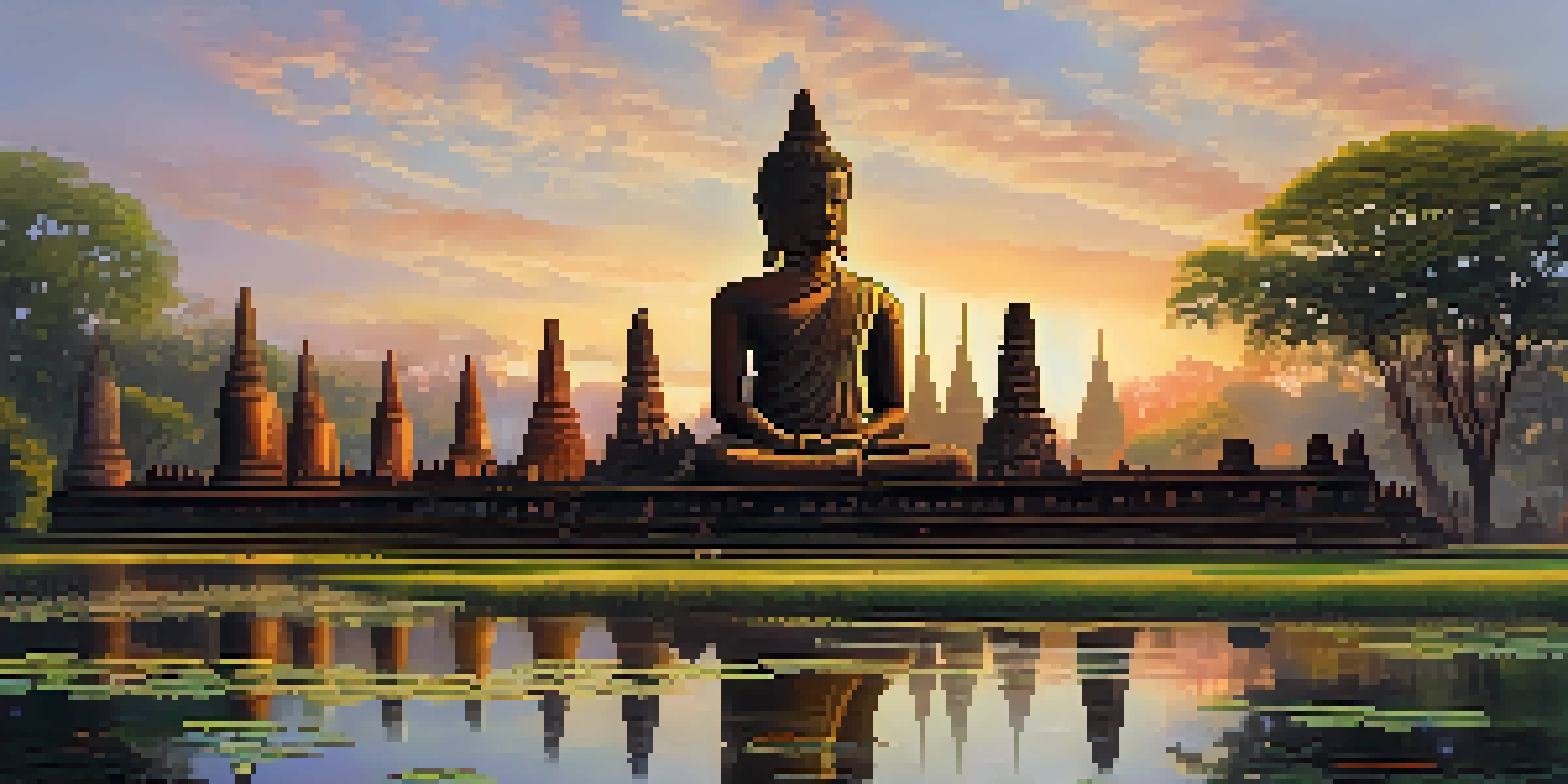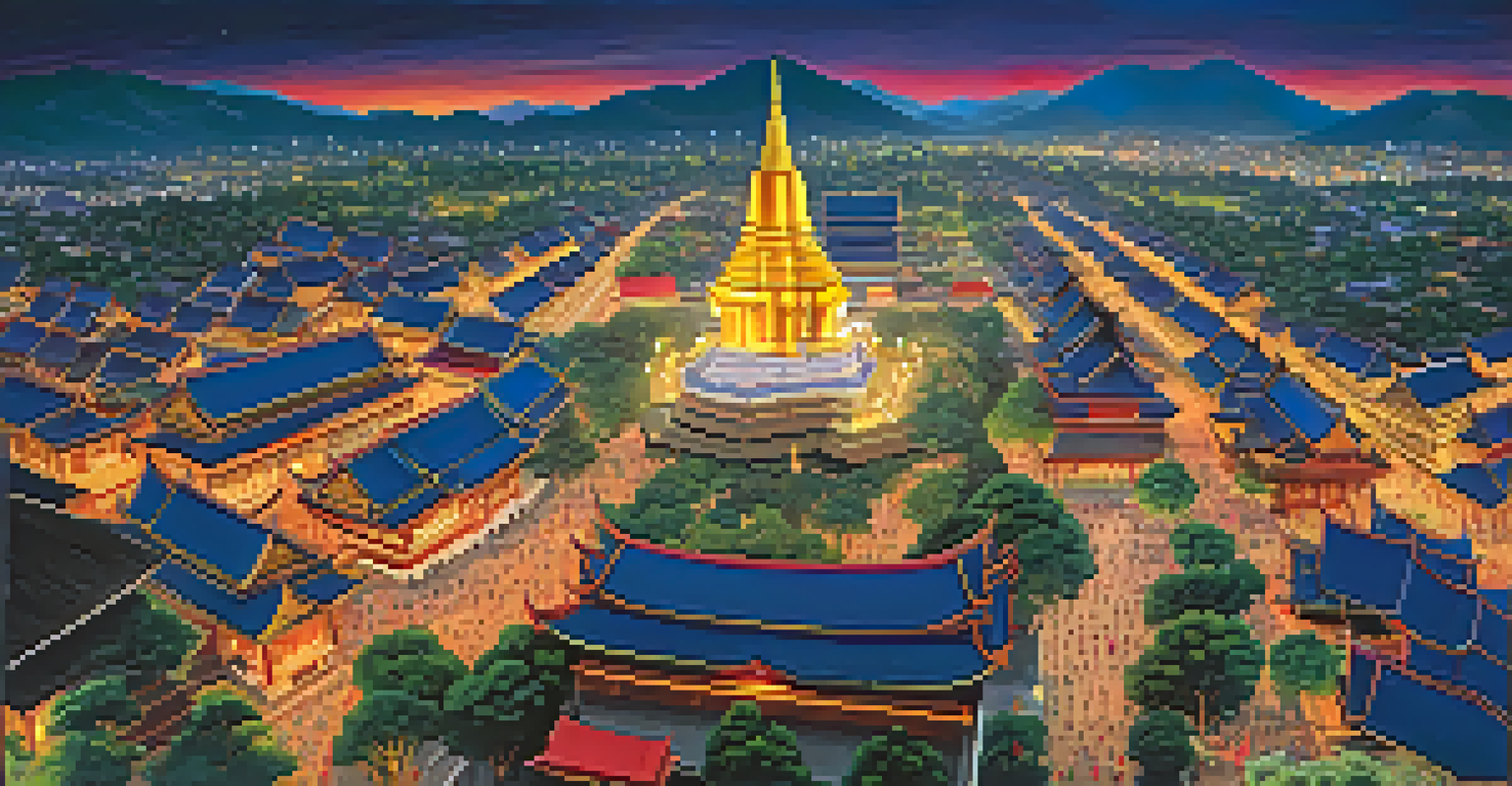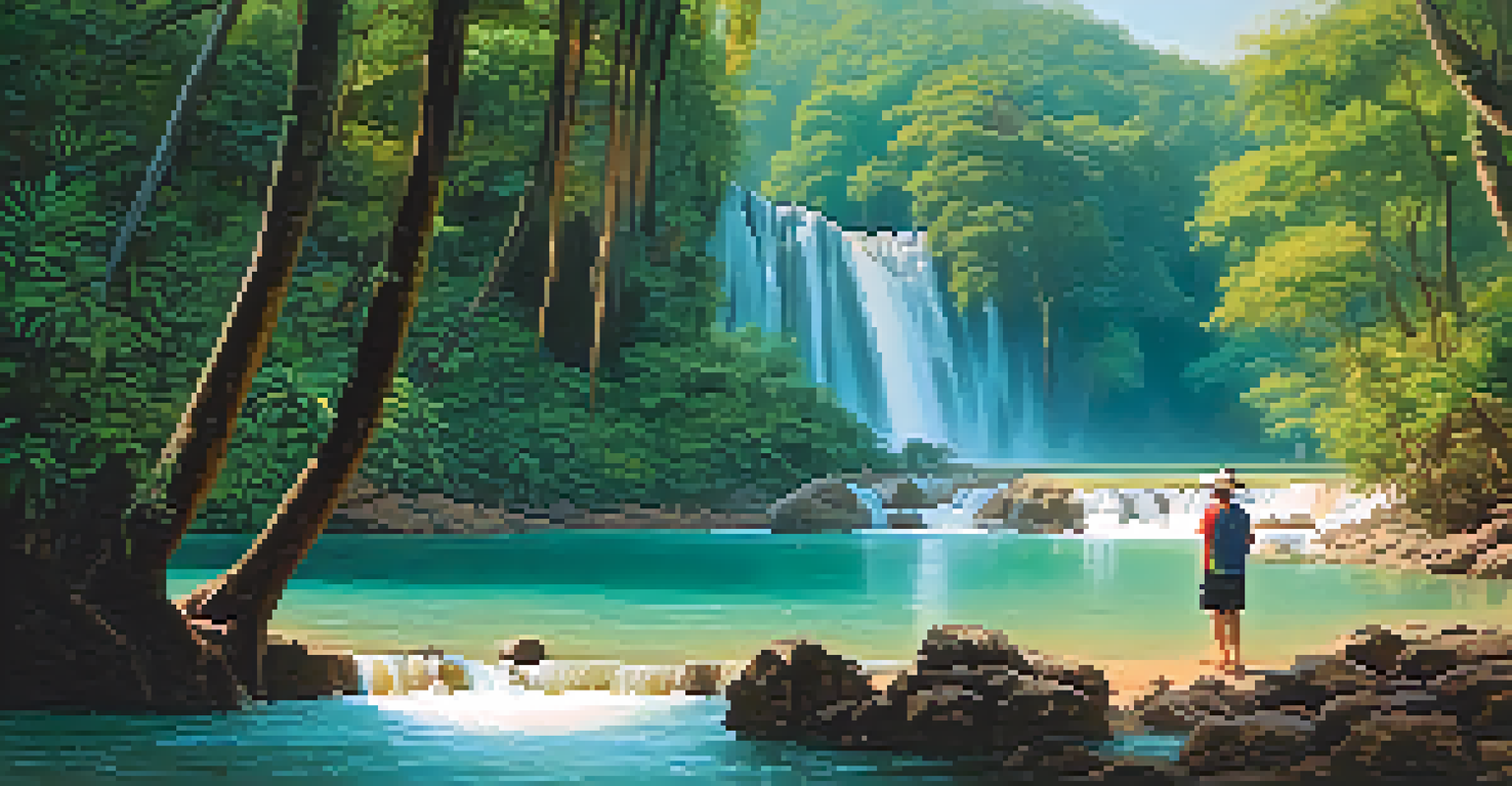Exploring the Hidden Gems of Thailand's Cultural Heritage Sites

The Enchanting Ruins of Sukhothai Historical Park
Sukhothai Historical Park is a treasure trove of ancient ruins that transport visitors back to the 13th century. With its serene lotus ponds and towering Buddha statues, it beautifully encapsulates the essence of Thailand's first capital. Walking through the park feels like wandering through a living museum, where the echoes of history whisper tales of a glorious past.
The past is never dead. It's not even past.
As you explore the expansive grounds, you'll encounter impressive structures like Wat Mahathat, adorned with intricate carvings and a captivating Buddha image. The park is especially enchanting at sunrise or sunset when the light bathes the ruins in a golden glow, enhancing its mystical allure. It's a perfect spot for photography enthusiasts eager to capture the beauty of historical architecture.
Beyond its stunning visuals, Sukhothai offers insights into the country's early art and culture. The site was not just a political center but also a hub for the development of Thai script and architecture. Visiting Sukhothai gives you a deeper appreciation of how history has shaped modern Thailand.
The Unique Traditions of Chiang Mai's Old City
Chiang Mai's Old City is a delightful blend of ancient temples and vibrant culture, making it a must-visit for anyone exploring Thailand. The city's history dates back to the 13th century, and remnants of its past can be seen in the well-preserved walls and moat that encircle the area. It's like stepping into a time capsule where traditional customs coexist with modern life.

As you stroll through the narrow lanes, you’ll discover stunning temples such as Wat Phra Singh, renowned for its intricate Lanna architecture. The atmosphere is enriched by local festivals, like Yi Peng, where sky lanterns illuminate the night sky, creating a magical experience. Participating in these festivities can provide a deeper understanding of the local culture and community spirit.
Explore Thailand's Ancient Ruins
Discover the rich history and stunning architecture of historical sites like Sukhothai, Ayutthaya, and Kamphaeng Phet.
Chiang Mai also offers opportunities to engage with local artisans and learn about their crafts. From silk weaving to pottery, the Old City is filled with workshops where you can try your hand at traditional skills. This hands-on experience connects you more intimately with the culture, allowing you to take home a piece of Thailand's artistic heritage.
Exploring the Mystical Temples of Ayutthaya
Ayutthaya, once the thriving capital of the Kingdom of Siam, is now a UNESCO World Heritage Site filled with stunning temple ruins. The city’s impressive structures, such as Wat Chaiwatthanaram, evoke a sense of grandeur that leaves visitors in awe. Exploring these historical sites feels like a journey back in time, where you can almost hear the bustling market sounds of centuries past.
To travel is to discover that everyone is wrong about other countries.
The blend of Khmer and Siamese architecture is particularly striking, with towering prang (spires) and intricate stucco work that tells stories of religious devotion. Each temple has its own unique charm; for instance, Wat Mahathat is famous for the Buddha head entwined in tree roots, creating a captivating image of nature reclaiming history. This site is often a favorite for those who enjoy photography and storytelling.
Visiting Ayutthaya also offers a chance to learn about the city's dramatic rise and fall, including its destruction by Burmese forces in the 18th century. The ruins serve as poignant reminders of the impermanence of power. As you wander through the remnants, you can reflect on the resilience of Thai culture that continues to thrive today.
Cultural Richness at the Historic Town of Luang Prabang
Although technically in Laos, Luang Prabang is a cultural gem that reflects the shared heritage of Southeast Asia, making it a worthwhile visit just across the border. This UNESCO World Heritage Site is known for its well-preserved fusion of traditional Lao architecture and French colonial influences. The town's charm lies in its tranquil streets, where time seems to slow down.
The daily alms-giving ceremony, where monks collect food offerings at dawn, offers a unique glimpse into local spiritual practices. It’s not just a sight to behold but an experience that connects you with the rhythm of life in Luang Prabang. Participating respectfully in this tradition can be a profound way to engage with the local community.
Immerse in Cultural Traditions
Experience the vibrant local culture in places like Chiang Mai and the Isaan region, where traditional festivals and crafts thrive.
Beyond its stunning temples, Luang Prabang is surrounded by breathtaking natural beauty, including waterfalls and mountains. The Kuang Si Falls, with its turquoise waters, is perfect for a refreshing dip after exploring the town’s cultural sites. This blend of nature and heritage makes Luang Prabang a place where you can rejuvenate both body and soul.
The Artistic Wonders of Ubon Ratchathani
Ubon Ratchathani, often overlooked, is a city rich in cultural heritage and artistic expression, particularly known for its beautiful silk weaving. The local artisans create intricate designs that reflect both traditional and contemporary themes, offering unique pieces that make for great souvenirs. Visiting local workshops allows you to witness this age-old craft firsthand, making it a rewarding experience.
The city also hosts the annual Ubon Ratchathani Candle Festival, showcasing stunningly crafted wax sculptures that celebrate Buddhist beliefs. These elaborate candles are paraded through the streets, creating a vibrant atmosphere filled with color and joy. This festival provides an excellent opportunity to immerse yourself in local culture and connect with the community.
Moreover, Ubon Ratchathani is home to several spectacular temples, such as Wat Nong Bua, known for its striking architecture and serene atmosphere. The temple’s unique stupa, resembling a lotus flower, is a sight to behold and offers a peaceful retreat for reflection. Exploring Ubon Ratchathani reveals a side of Thailand that is steeped in tradition and artistic flair.
The Serenity of the Ancient City of Kamphaeng Phet
Kamphaeng Phet, another UNESCO World Heritage Site, is often overshadowed by its more famous neighbors but is equally captivating with its ancient ruins. The well-preserved historical park showcases the remnants of a once-thriving city, characterized by crumbling temples and serene surroundings. It’s a perfect spot for those seeking tranquility away from the tourist crowds.
Among the highlights is Wat Phra Kaeo, renowned for its impressive brick structures and serene atmosphere. The site's peaceful gardens make it an ideal location for leisurely strolls and quiet reflection. You can almost feel the history enveloping you as you explore the remnants of this ancient civilization.
Natural Beauty Meets Heritage
Enjoy the breathtaking landscapes surrounding cultural gems like Luang Prabang and Ubon Ratchathani, offering a perfect blend of nature and history.
Kamphaeng Phet also offers insight into the historical significance of the area as a strategic border town during the Sukhothai period. Learning about its role in the broader context of Thai history adds depth to your visit. Discovering these hidden gems allows you to appreciate the richness of Thailand's cultural tapestry.
Experiencing the Local Culture in Isaan Region
The Isaan region, known for its rich cultural heritage and unique traditions, is often overlooked by travelers, but it’s one of Thailand's best-kept secrets. From vibrant festivals to delicious street food, Isaan offers an authentic experience of Thai culture that’s hard to find elsewhere. Exploring this region feels like stepping into the heart of Thailand, where customs and traditions are deeply rooted.
One of the highlights of Isaan is the renowned Bun Bang Fai Festival, where locals launch homemade rockets to ensure a good rice harvest. This lively event is filled with music, dance, and laughter, showcasing the community spirit that defines the region. Joining in on the festivities allows you to connect with the locals and experience their joyful way of life.

Additionally, Isaan is famous for its delectable cuisine, characterized by bold flavors and fresh ingredients. Dishes like som tam (papaya salad) and larb (spicy minced meat salad) are must-tries. A cooking class in the region can deepen your appreciation for the culinary arts while allowing you to take a taste of Isaan back home.
The Timeless Beauty of Phimai Historical Park
Phimai Historical Park is a striking example of Khmer architecture, often compared to the more famous Angkor Wat, but with far fewer crowds. The centerpiece is the impressive Phimai Sanctuary, which dates back to the 11th century, showcasing the grandeur of ancient craftsmanship. Walking through the park feels like a journey into the past, where you can marvel at the intricate stone carvings and majestic structures.
The park’s layout, with its well-maintained pathways and lush greenery, invites visitors to explore at a leisurely pace. Many come to witness the annual Phimai Festival, which celebrates the rich cultural heritage of the area with traditional performances and activities. This festival provides a unique opportunity to engage with local customs and enjoy the vibrant atmosphere.
Visiting Phimai also offers a chance to learn about the historical significance of the site as a religious center during the Khmer Empire. The stories woven into the stones reveal the deep spirituality and artistry of the time. Experiencing Phimai is not just about seeing beautiful ruins; it’s about connecting with the history that has shaped Thailand’s cultural landscape.